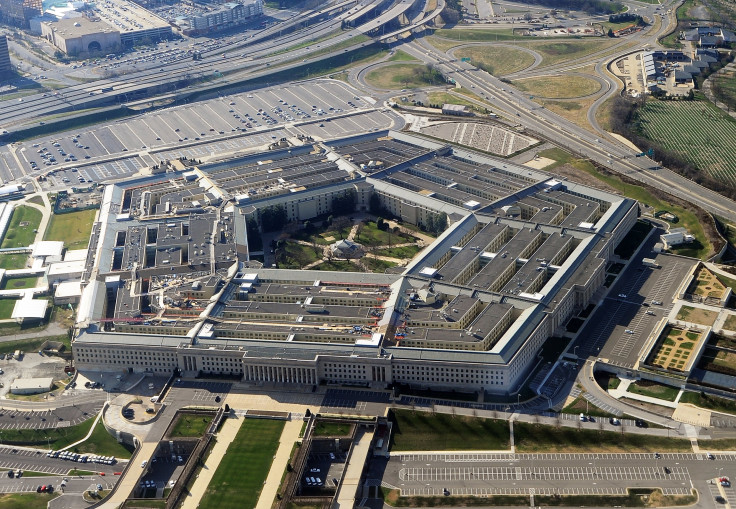Navy UFO Sighting: Alien Object Spotted With Infrared Sensor In Secret Pentagon Program

Earlier this month, the New York Times released an elaborate report detailing a secret Pentagon-led program that focused on unidentified flying objects. Videos from the program released along with the report show official images of what seem to be UFOs. The clips were captured by Raytheon's infrared sensors, the company said.
The Times report detailed a 2004 incident near the coast of San Diego in which three F/A-18 Super Hornet fighter jets encountered a UFO. The video, released by the group To the Stars Academy of Arts and Science, shows the American pilots astonished of what they were seeing.
The video can be seen here:
Raytheon, an aerospace and defense company based in Massachusetts, said it was its own Advanced Targeting Forward Look Infrared sensor located under one of the fighter jets that captured the UFO.
The Pentagon UFO program, called the Advanced Aerospace Threat Identification Program, analyzed UAP imagery and data, including images from Raytheon’s ATFLIR.
“We might be the system that caught the first evidence of E.T. out there,” Aaron Maestas, the director of engineering and chief engineer for Surveillance and Targeting Systems at the company’s Space and Airborne Systems business, said in a statement this month. “But I’m not surprised we were able to see it. ATFLIR is designed to operate on targets that are traveling in excess of Mach 1. It’s a very agile optical system with a sensitive detector that can distinguish between the cold sky and the hot moving target quite easily.”
Raytheon describes the ATFLIR as a “single pod pod that combines mid-wave infrared targeting and navigation FLIRs, an electro-optical, or visual light, sensor, a laser rangefinder and target designator, and a laser spot-tracker.” ATFLIR can spot and designate targets during the day or at night. It can locate targets at ranges surpassing 40 nautical miles and altitudes past 50,000 feet.
While the video shows a mysterious oval object in the sky, Raytheon said the images captured during the incident are not concrete proof that the pilots were chasing after an actual UFO.
“To really be sure, we would need the raw data,” Dr. Steve Cummings, vice president of Technology Development and Execution at Raytheon Space and Airborne Systems said in a statement. “Visual displays alone are not the best evidence.”
Cummings said the best way to track a UFO is by conducting a “wide-area search of some form or another.”
“I would want want at least two sensors, like radar and [electro-optical/infrared], to search the skies,” he said. “One way to actually verify these and be absolutely certain that this is not an anomaly is to get the same target, behaving the same way on multiple sensors.”
Besides the incident in San Diego, the $22 million Pentagon UFO program also looked at other video of encounters with unknown objects and U.S. military planes.
To the Stars Academy of Arts and Science released another video that shows a UFO.
The UFO program also managed to store materials believed to have been recovered from unidentified aerial phenomena. Additionally, researchers studied people who reported going through physical effects from encounters with objects and also interviewed military service members who said they had seen UFOs.
The U.S. government said the program shut down in 2012, but supporters say it still exists, although the Defense Department has ceased funding.
© Copyright IBTimes 2025. All rights reserved.



















